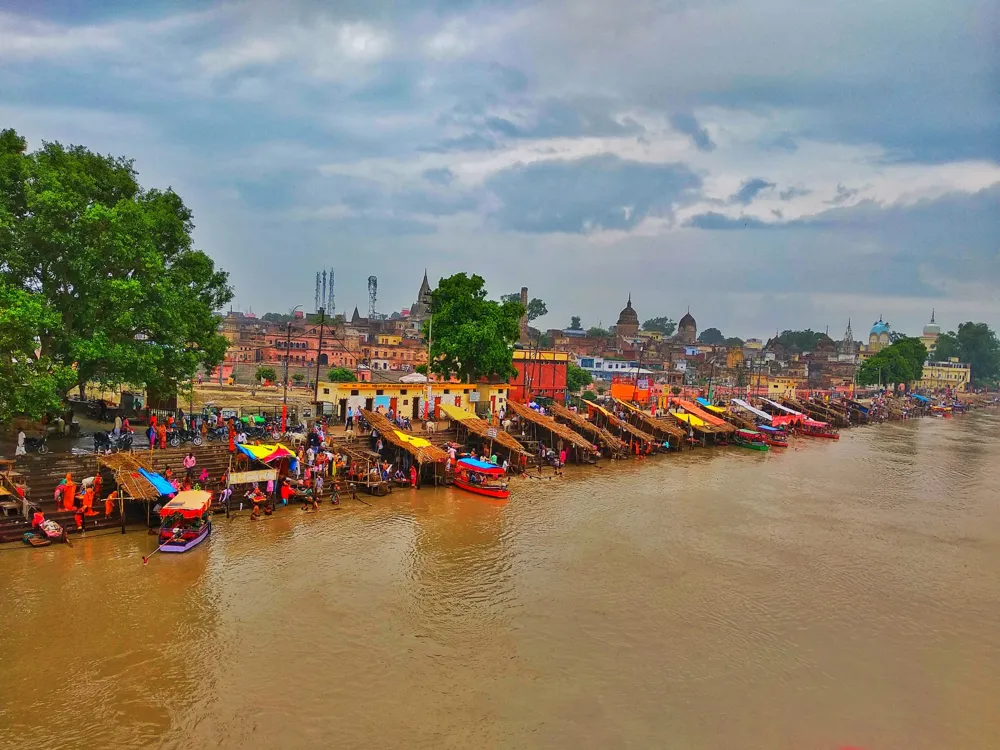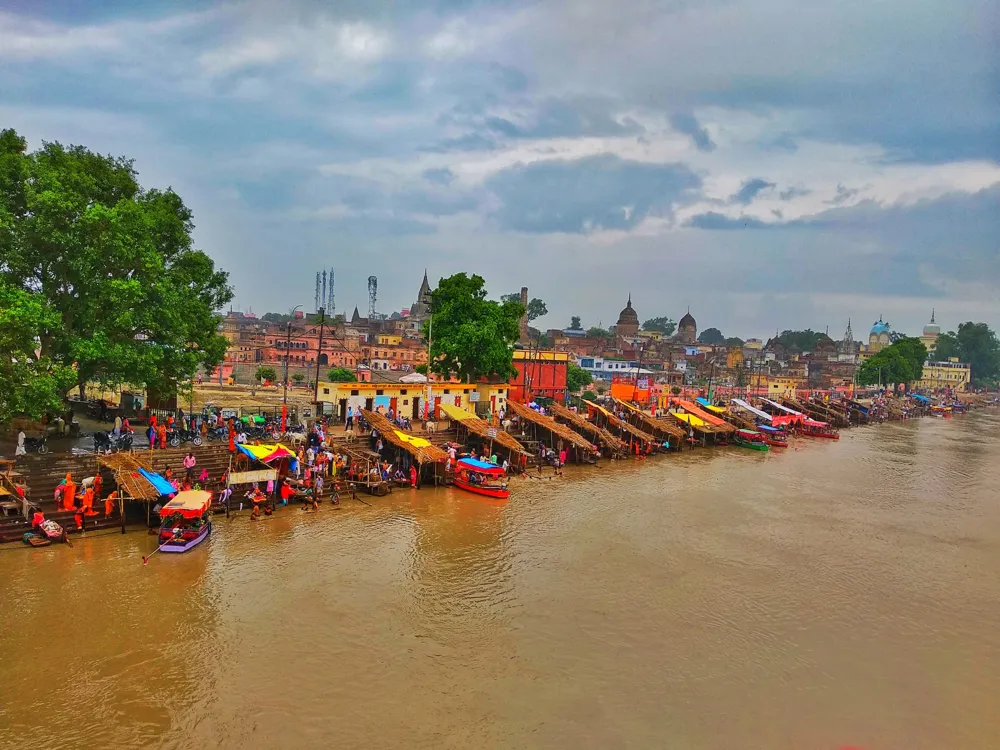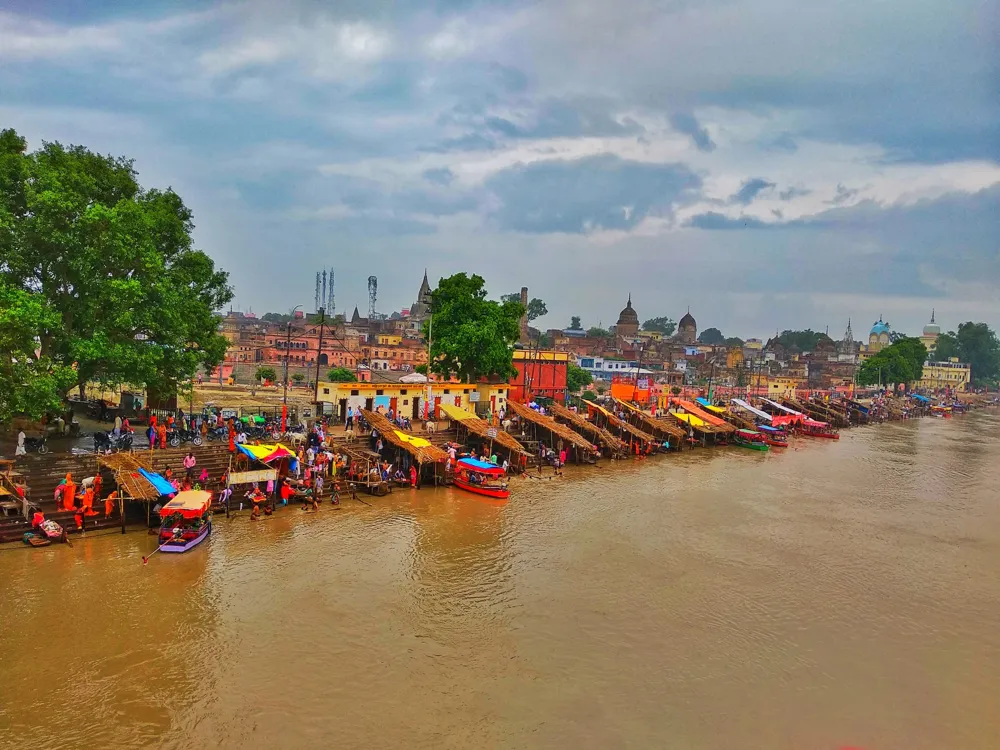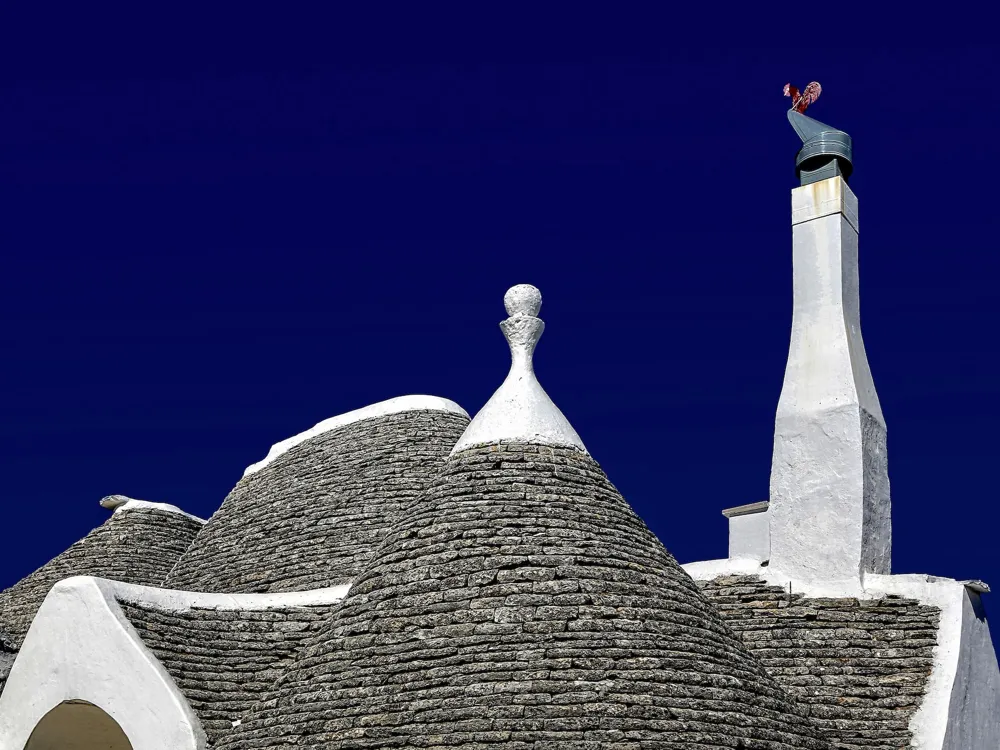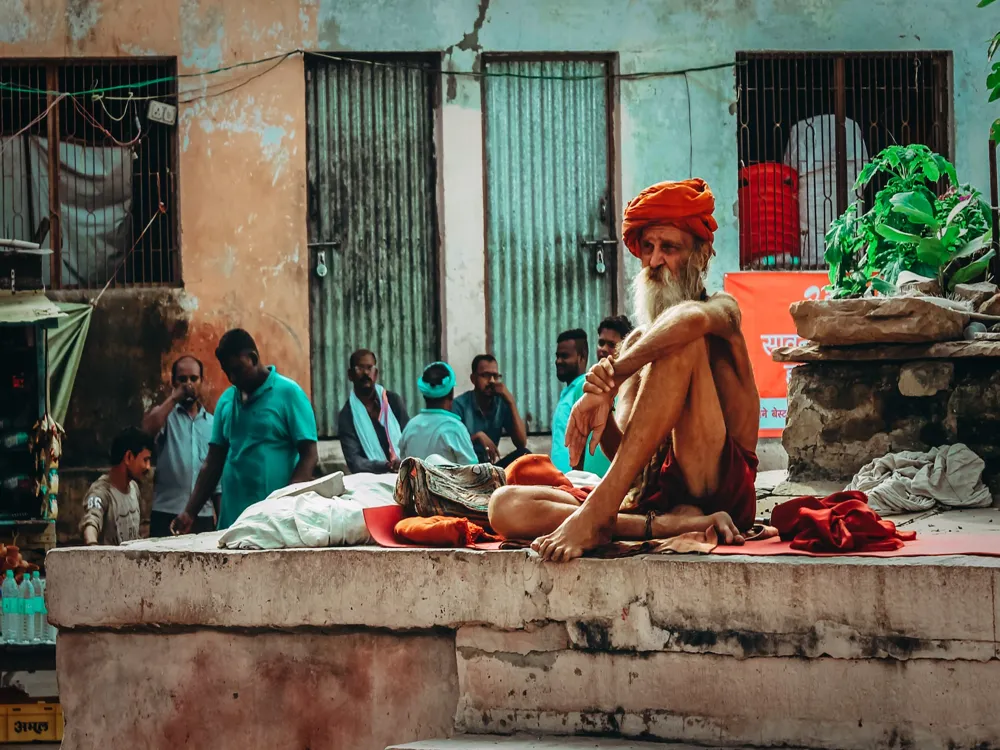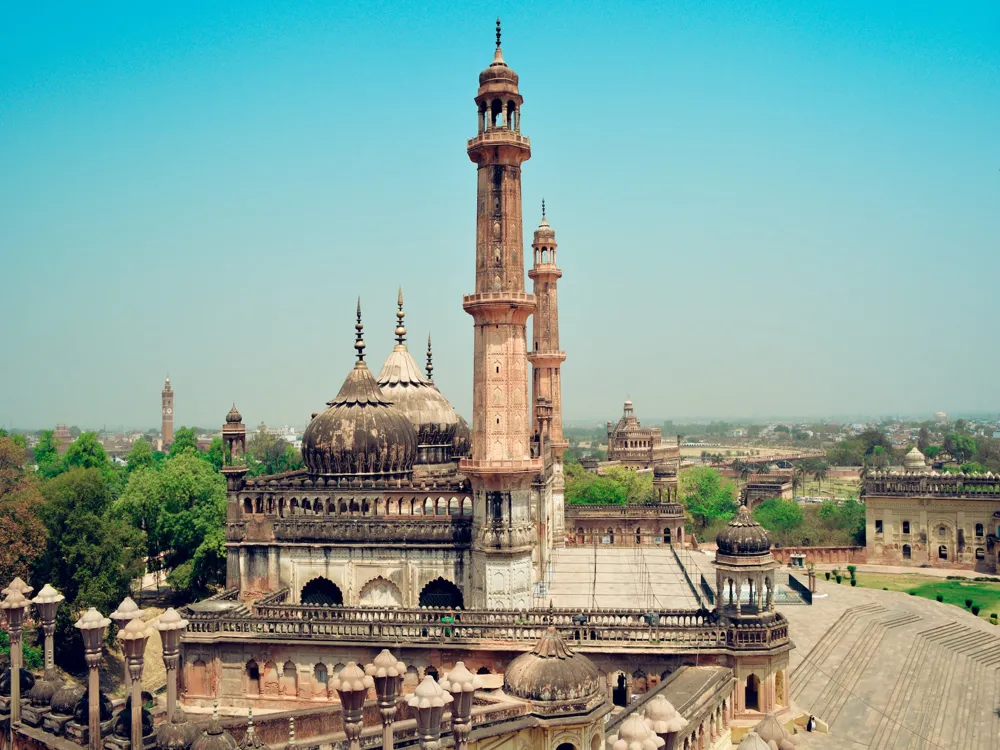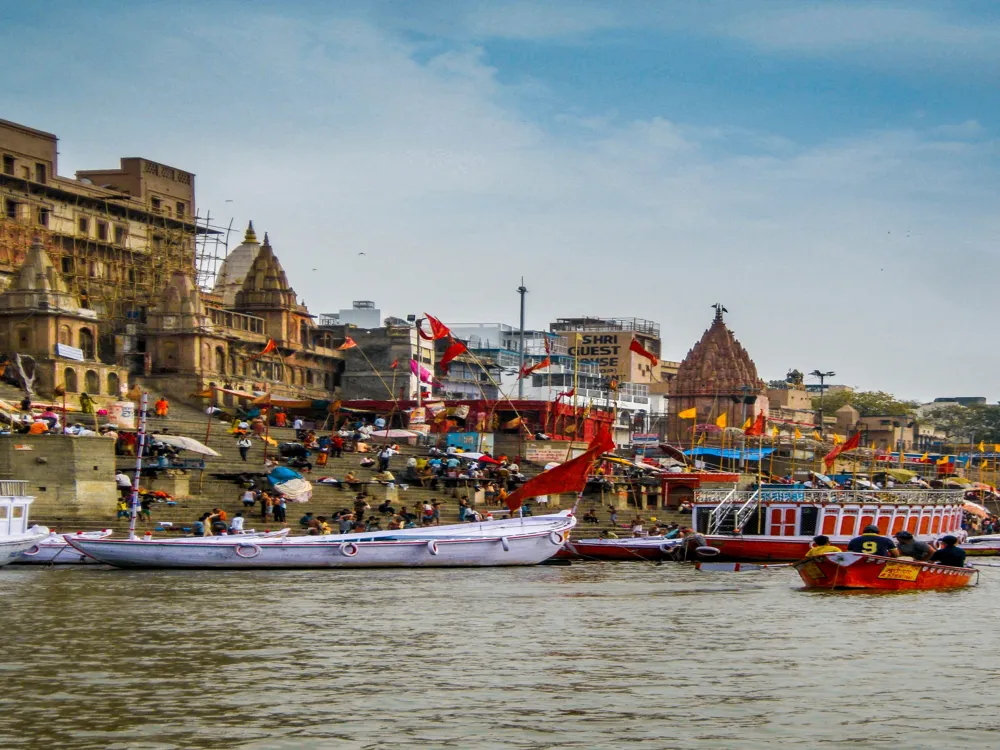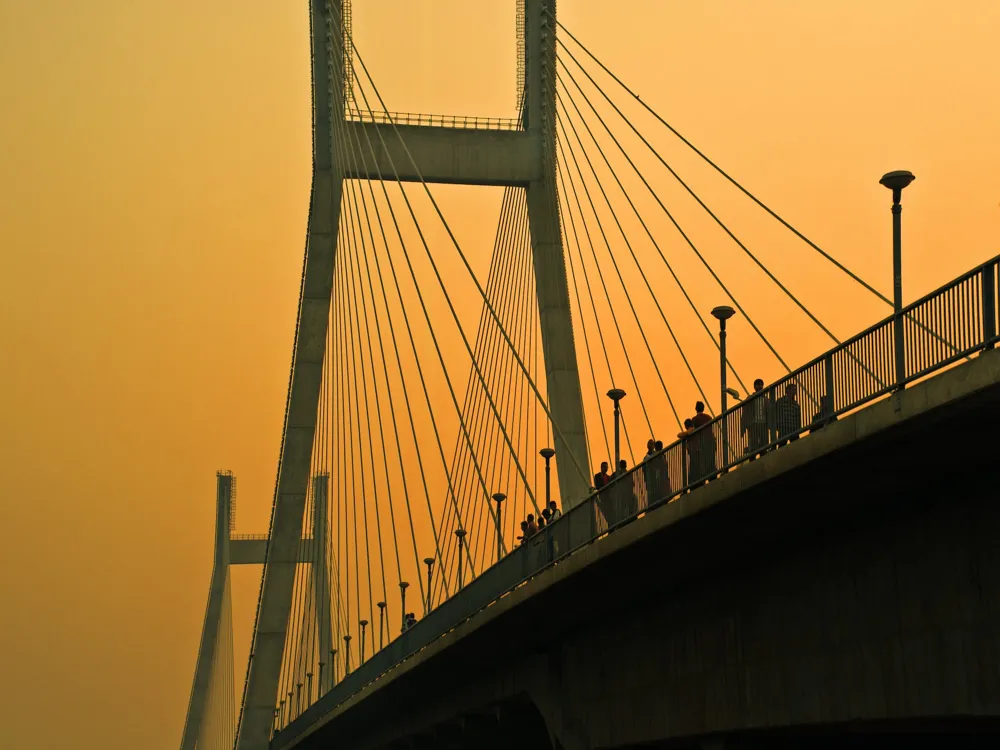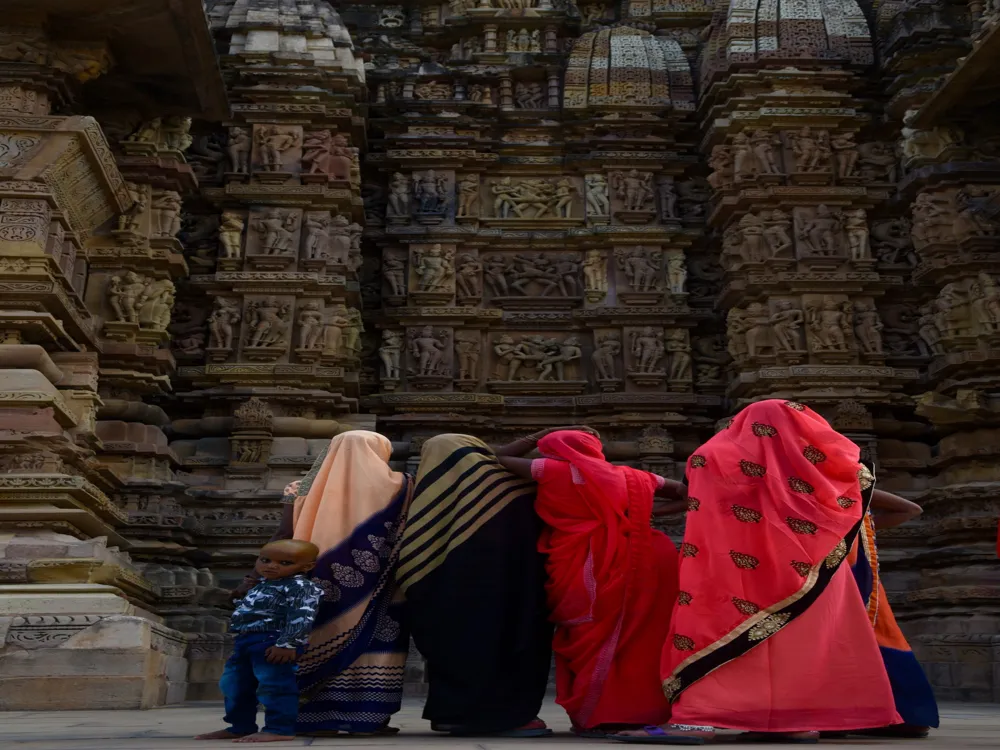Guptar Ghat, a significant landmark in the ancient city of Ayodhya, Uttar Pradesh, holds a special place in the hearts of many. This historical ghat, situated along the banks of the holy river Sarayu, is steeped in mythological and cultural significance. It is believed to be the spot where Lord Rama took Jal Samadhi, marking his departure from earth to his heavenly abode, thus endowing the ghat with immense religious importance. The ghat's history dates back thousands of years, intertwined with the epic tale of Ramayana and the life of Lord Rama. Over the centuries, Guptar Ghat has witnessed numerous changes, evolving both culturally and historically. It has become a focal point for pilgrims and tourists alike, drawn to its spiritual aura and serene beauty. The ghat comes alive during various festivals and religious events, particularly on Ram Navami, when thousands gather to celebrate the birth of Lord Rama. Aside from its religious significance, Guptar Ghat is a marvel of natural beauty. The ghat offers a tranquil escape from the bustling city life, with its picturesque views of the Sarayu river, especially during sunrise and sunset. The river's gentle flow, combined with the ambient sounds of temple bells and chants, creates a meditative atmosphere that resonates with peace and spirituality. The architecture of Guptar Ghat is a splendid amalgamation of ancient and modern design elements, reflecting the rich cultural heritage of Ayodhya. The ghat comprises a series of steps leading down to the river, flanked by various temples and shrines, each with its unique architectural style and historical significance. One of the most striking features of Guptar Ghat is its intricate stonework, showcasing the skills of traditional Indian artisans. The steps, made of sandstone, are a testament to the architectural prowess of the time, designed to withstand the river's ebb and flow. The temples at Guptar Ghat exhibit a variety of architectural styles, ranging from the ancient Nagara style to more contemporary designs, each representing a different era of Indian history. The main temple at the ghat, dedicated to Lord Rama, stands as a symbol of devotion and architectural grandeur. It features a magnificent dome, adorned with intricate carvings and sculptures depicting scenes from the Ramayana. The temple's interior is equally impressive, with beautifully painted walls and ceilings that narrate the life of Lord Rama in vibrant colors and detailed imagery. The ideal time to visit Guptar Ghat is during the cooler months from October to March. The weather is pleasant, making it comfortable to explore the ghat and its surroundings. Additionally, visiting during the festival of Ram Navami offers a unique cultural experience. Visitors are advised to dress modestly, respecting the religious nature of the site. It's recommended to remove shoes before entering the temple areas. Maintaining the sanctity of the place by not littering and being respectful to the rituals performed is also essential. Ayodhya offers a variety of local delicacies that one must try. Street food around Guptar Ghat is a must-experience, with dishes like Kachori-Sabzi and Jalebi. The local markets near the ghat are great for purchasing religious artifacts, souvenirs, and traditional Indian clothing. Guptar Ghat is well-connected and accessible by various means of transport. The nearest airport is in Lucknow, approximately 135 kilometers away. From the airport, one can hire a taxi or take a bus to Ayodhya. Ayodhya railway station is the nearest railhead, with several trains connecting the city to other parts of India. For local transport, auto-rickshaws and cycle-rickshaws are readily available and offer an economical way to reach Guptar Ghat. READ MORE:-Overview of Guptar Ghat, Ayodhya, Uttar Pradesh
Architecture of Guptar Ghat
Tips When Visiting Guptar Ghat
Best Time to Visit
Dress Code and Etiquette
Local Cuisine and Shopping
How To Reach Guptar Ghat
Guptar Ghat
Ayodhya
Uttar Pradesh
₹ 9,500 onwards
View ayodhya Packages
Weather :
Tags : Historical Site
Timings : 24 hrs
Time Required : 1 - 2 hrs
Entry Fee : Free
Planning a Trip? Ask Your Question
Ayodhya Travel Packages
View All Packages For Ayodhya
Top Hotel Collections for Ayodhya

Private Pool

Luxury Hotels

5-Star Hotels

Pet Friendly
Top Hotels Near Ayodhya
Other Top Ranking Places In Ayodhya
View All Places To Visit In ayodhya
View ayodhya Packages
Weather :
Tags : Historical Site
Timings : 24 hrs
Time Required : 1 - 2 hrs
Entry Fee : Free
Planning a Trip? Ask Your Question
Ayodhya Travel Packages
View All Packages For Ayodhya
Top Hotel Collections for Ayodhya

Private Pool

Luxury Hotels

5-Star Hotels

Pet Friendly







